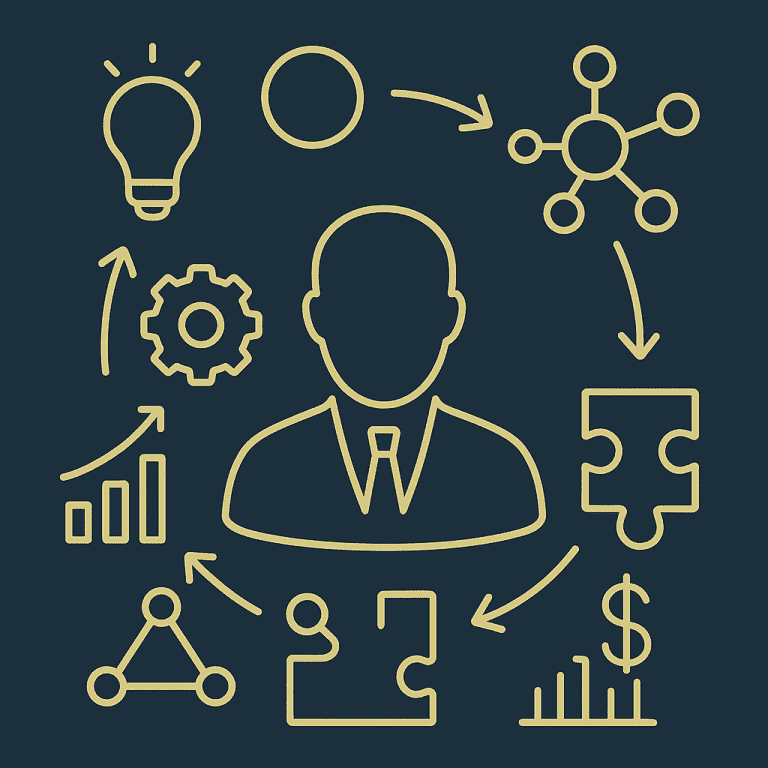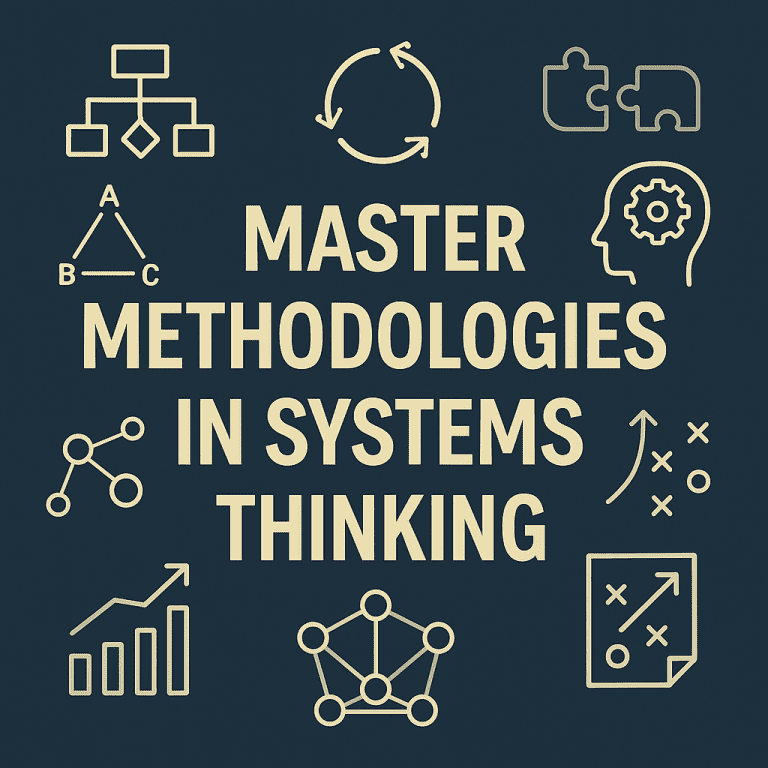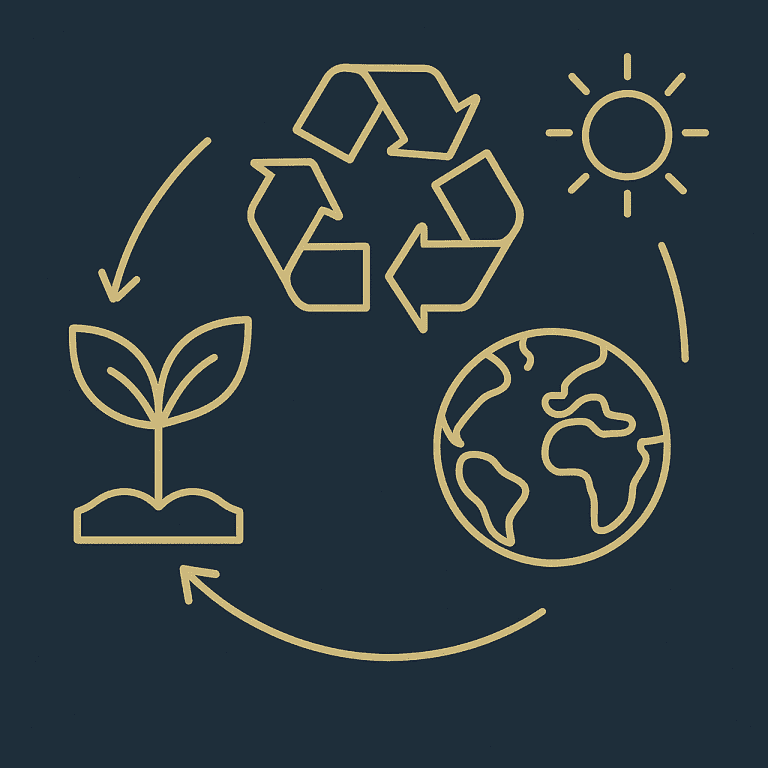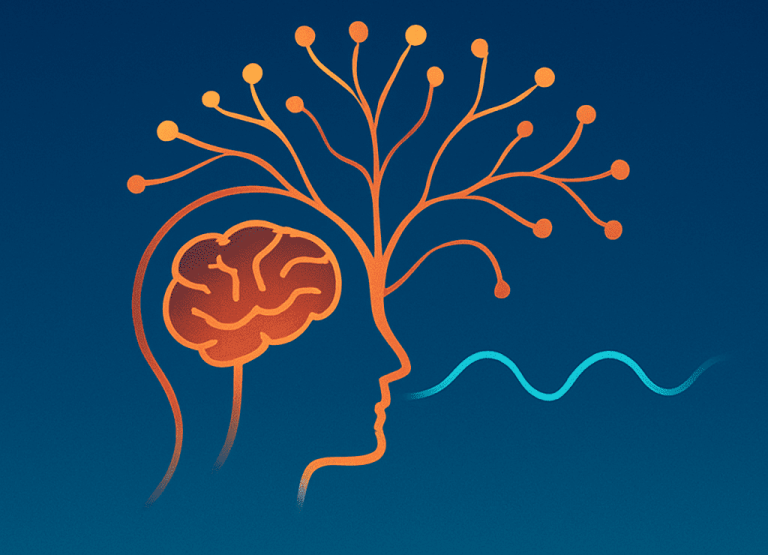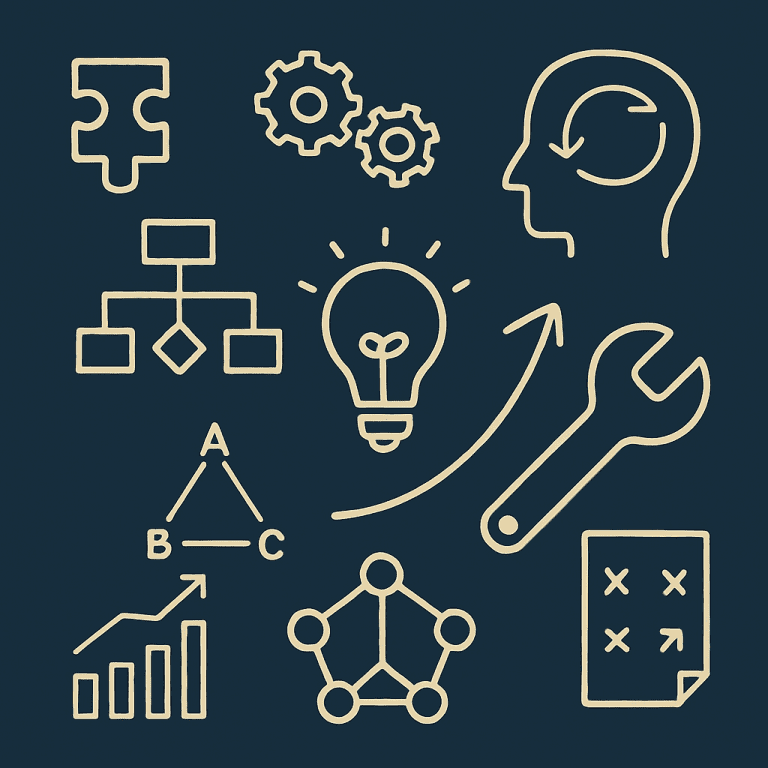1. Seeing the Bigger Picture
The world rarely works in isolation. In business, technology, government, and society, everything is connected. A single server glitch, a department out of sync, or a flawed policy can create ripple effects, affecting people, processes, and unexpected areas.
This is where systems thinking comes in. It’s the mindset of looking beyond individual parts and seeing the entire living, interconnected system.
Systems thinking is not just a method. It’s a way of seeing. It helps you go beyond simple cause-and-effect, embrace complexity, stay humble in your problem-solving, and act with deeper awareness.
Is It Always Essential?
Not always. Not every client or project demands it. But when you dig deeper than quick fixes, you’ll often discover that systems thinking connects ideas and solves challenges that simpler tools miss.
In this guide, we’ll explore:
- What systems thinking truly means.
- When it’s powerful—and when simpler tools are enough.
- The deeper idea of parts vs. the whole.
- How to combine systems thinking with other tools.
- Habits to build your systems thinking skills.
- Easy reflection exercises to help you grow.
2. What Is Systems Thinking (and Why Consultants Should Care)
2.1 Beyond Breaking Things Apart
Traditional thinking solves problems by breaking them into small parts. But what if the real issue is how the parts interact?
Systems thinking helps you understand:
- Emergence: New qualities that appear when parts work together—like a team creating its own culture.
- Interdependence: How one part affects others—like how clients, users, and suppliers rely on each other.
- Boundaries: Knowing where your system starts and ends—and realizing these lines can shift.
- Feedback Loops: How actions can either boost or slow down changes over time.
When you shift your view to the system, you start to understand problems in a deeper way.
2.2 Not a Magic Tool
Systems thinking doesn’t solve everything. For simple tasks or short deadlines, focusing on specific parts can work better.
But when you face complexity, big changes, or human challenges, systems thinking becomes essential.
2.3 When to Use Systems Thinking
Use it when you see:
- Recurring Problems: The issue keeps coming back, even after fixes.
- Solutions Creating New Problems: Fixing one thing breaks another.
- Many Moving Parts: Many teams, departments, or factors are involved.
- Unclear Causes: You can’t clearly link cause and effect.
- Conflicting Opinions: People disagree on what the problem is.
- Cultural Challenges: People, mindsets, or behaviors need to change.
- Large-Scale Projects: Big programs with wide impact.
- Unpredictable Outcomes: You fear side effects or risks.
- Limited Resources: You need to find small actions with big results.
- Cross-Functional Work: Many teams must collaborate.
3. Why Systems Thinking Truly Matters
3.1 Complex and Changing Situations
Public sector work and digital transformation involve systems that evolve and react. You need a systems view to navigate and lead.
3.2 Too Many Stakeholders
When many groups are involved, systems thinking helps you see relationships and dependencies.
3.3 Long-Term Impact
With policies or digital tools, your actions last. Systems thinking helps you avoid future problems.
3.4 Innovation in Uncertainty
When the future is unclear—AI, climate, or tech changes—systems thinking helps spot patterns and design flexible solutions.
3.5 Crisis Situations
In emergencies, we rush to fix symptoms. Systems thinking helps us find and fix the root causes.
3.6 Blending People and Tech
Tech isn’t enough. You need adoption, training, trust, and fairness. Systems thinking supports this balance.
4. When Simpler Tools Are Enough
Skip full systems thinking when:
- You’re doing a routine task.
- It’s repeatable work (like installing a system).
- The project scope is very small and clear.
- You’re optimizing, not transforming.
- The organization is stable and feedback is ignored.
Still, even in these cases, basic systems thinking helps. Seeing feedback loops and stakeholder roles is always useful.
5. Other Tools and How They Fit Together
| Tool | Focus | Best For |
|---|---|---|
| Design Thinking | Empathy + Prototypes | Service design, UX |
| Lean / Agile | Fast delivery, customer value | MVPs, product builds |
| Root Cause Analysis | Diagnosing problems | Fixing failures |
| SWOT / PESTEL | External environment | Strategy, markets |
| Business Model Canvas | Value chains | Business design |
| Project Management | Timelines and risks | Delivering scope |
| Six Sigma | Quality and process | Efficiency |
| OKRs | Goals and outcomes | Team alignment |
These aren’t rivals to systems thinking. Use them with it:
- Put root causes inside system maps.
- Add customer journeys into systems context.
- Use agile sprints to test change inside systems.
6. Skills Every Consultant Needs
- Problem Scoping: Ask if you’re fixing symptoms or systems.
- Stakeholder Awareness: Know who gains, who loses, and who connects.
- Analytical Thinking: Use evidence, test ideas.
- Business Understanding: Know how value, cost, and risk work.
- Tech Fluency: Understand system behavior, even if you don’t code.
- Facilitation: Help teams align, co-create, and move forward.
- Storytelling: Use metaphors and visuals to simplify the complex.
- Adaptability: Learn fast and stay open.
- Ethics: Ask who is helped or harmed.
- Resilience: Keep going when things get tough.
7. The Eternal Consulting Tension: Parts vs. Whole
Systems thinking lives in tension:
- Breaking things down is useful—but can hide the bigger truth.
- Seeing the whole is powerful—but can feel overwhelming.
- Acting quickly is necessary—but may miss deep patterns.
The best consultants switch between both views based on context.
8. Build Systems Thinking With These Habits
8.1 Map the System
Draw stakeholders, flows, and feedback loops.
Action: Start projects with a 30-min “system sketch” session.
8.2 Ask What’s Hidden
Look for unseen feedback, delays, or voices.
Action: Add a “hidden dynamics” section in every presentation.
8.3 Blend Tools Smartly
Use 5 Whys inside a system map.
Action: Pick one popular framework each month and reimagine it through a systems lens.
8.4 Pilot at System Level
Test in safe spaces. Watch how feedback works. Action: Set KPIs to track ripple effects.
8.5 Adjust Boundaries
Review your scope often.
Action: In reviews, ask: What’s moving in or out of the system?
8.6 Use Stories
Metaphors help others understand. Action: Build a “story kit” with 3 examples to explain systems.
8.7 Reflect Often
Ask: What assumptions am I making?
Action: After each project, write a 1-page reflection: What system shift would I do earlier next time?
9. Example: Improving a Government Bulletin
The Problem: A government ministry publishes a performance bulletin. It’s late, the data is messy, and no one trusts it.
Old Fixes: Speed up data collection. Add more sign-offs.
Systems Thinking Approach:
- Map the stakeholders.
- Map how data flows and where delays happen.
- Find feedback loops:
- Errors → rework → delay → lower trust → more checks → more delay.
- Identify leverage: Clean data early and set standards.
- Pilot fixes upstream.
Result: Reports became faster, cleaner, and trusted. Not from working harder—but by changing how the system worked.
10. Reflection Checklist
Ask these in every engagement:
- Who’s inside the system?
- What feedback loops exist?
- Where’s the smallest high-impact point?
- Are we testing ideas often?
- Are we iterating faster than our old plans?
- Who benefits—and who might be harmed?
- Are we delivering or transforming?
11. A Final Thought
Philosopher Alfred Whitehead once said:
“The minor fallacy lies in treating the parts as actual realities… The major fallacy lies in treating the whole as a fiction.”
Systems thinking invites us to live in the space between.
In consulting, especially at government or national scale, change is never just technical. It’s social. It’s systemic. And it’s messy.
Systems thinking doesn’t promise quick fixes. It offers better questions. And those questions lead to more lasting change.
12. Your Next Steps
- Run a 30-minute system sketch in your next project kickoff.
- Map one feedback loop in your current work.
- Read Donella Meadows’ “Leverage Points” essay.
- Create a short story toolkit with 3 examples.
- Ask yourself: “If my idea worked perfectly, what side effect might I regret in 6 months?”
These habits don’t just improve your work. They change how you see your work.
Thank you for reading. Share your thoughts—and let’s build a community of consultants who see the whole.
- The Whisper of the Whole: A Systems Thinking Guide for Consultants
- What is a System, Really?
- The Living Dance of Systems
- Resilience and the Wisdom of Adaptive Systems
- Roots of Insight
- The Systems Thinker’s Compass
- Drawing Complexity
- Peering Below the Surface
- Master Methodologies in Systems Thinking
- Enhancing Familiar Tools with Systems Thinking
- Transforming Business Through Systems Thinking
- Systems Thinking in Public Policy & Governance
- Sustainable Systems
- Systems Thinking for Engineering & Technology
- The Inner System: You
- The Roadblocks
- The Future of Systems Thinking
- Systems Thinking FAQ: Myths, Misunderstandings & Core Insights



